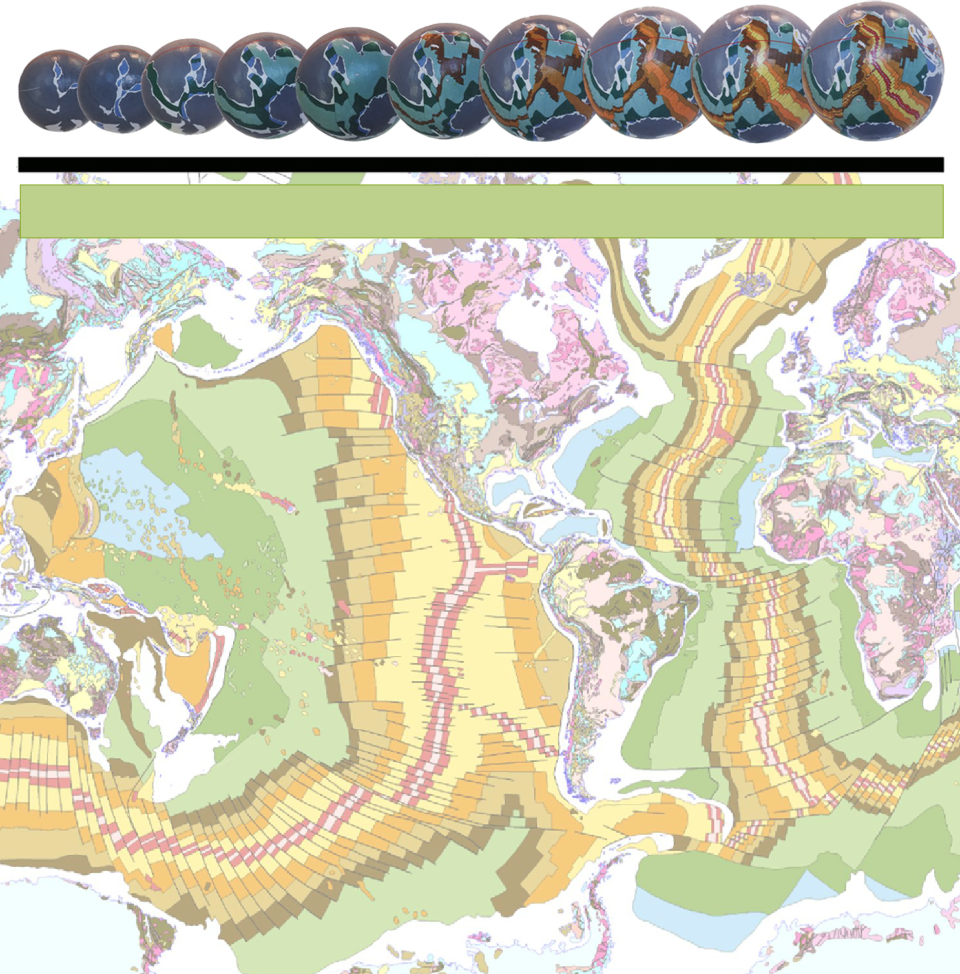LAURENTIA, BALTICA, LAURUSSIA
Laurentia, Baltica, Laurussia and numerous smaller fragments, such as Kazakhstania and fragments making up Southeast Asia are described in plate tectonic studies as sub-continents, or simply continental fragments. These are routinely described in the literature as fragments of pre-existing supercontinents that periodically dispersed and amalgamated between the larger supercontinents during continental break-up and subsequent reassemblage of the various continental fragments.

The Ordovician Gondwana Expansion Tectonic small Earth assemblage. This model shows the ancient coastline distribution (blue lines) defining North and South Gondwana in relation to Laurentia, Baltica, and Laurussia. The ancient Tethys, Iapetus, and Panthalassa Seas form part of a global network of continental seas (shaded areas) surrounding each of the exposed supercontinents.
On the Ordovician Expansion Tectonic small Earth model shown above each of these sub-continents were geographically connected to the supercontinents. Their presence and coastal outlines depended primarily on the variation in the sea levels existing at the time and the sub-continents were often separated geographically from the main supercontinents by the global network of continental seas.
As the continental crusts began to rupture during the late-Permian, the established continental seas then began to drain into newly formed marine sedimentary basins as the modern oceans began to form and open. The previously submerged seafloor surrounding each of the sub-continents was then exposed as dry lands and the surface areas of the sub-continents progressively increased to eventually form part of the more familiar Pangaea supercontinent


